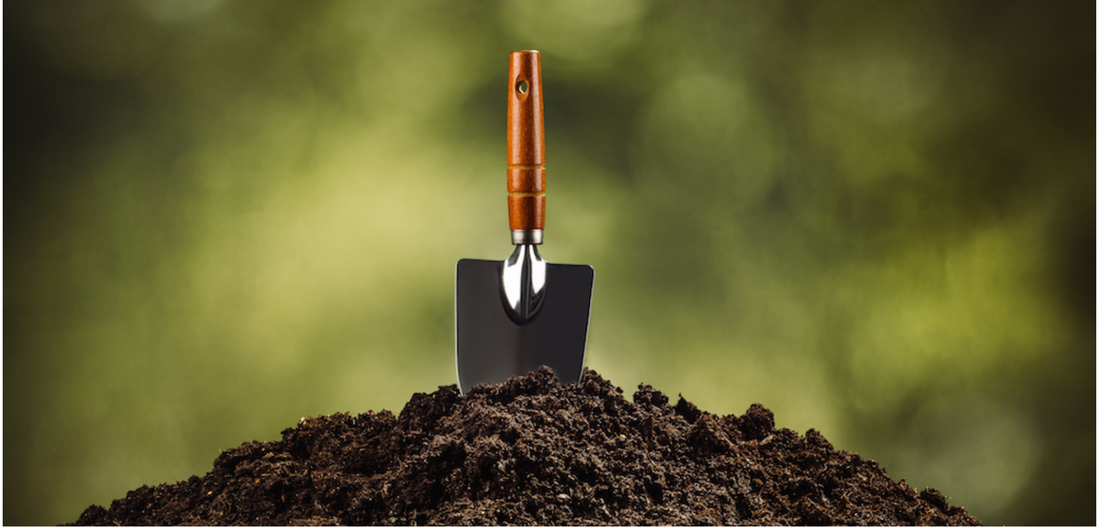Jamie Schneider DommDigital Strategist for the North American Division. TURNING YOUR DIGITAL INFLUENCE INTO GLOBAL IMPACTI was recently asked if digital communications could really make a global impact when only a third of the world’s population is on social media. This reminded me of one of my first campaigns for the Church. In the summer of 2016, I worked with “Your Best Pathway to Health” to help create community awareness for the free mega-health clinic that was coming to Beckley, WV in the heart of Appalachia. A quick search in Facebook Ads manager revealed that around 200K people were on Facebook within 50 miles of the convention center where the clinic would take place. With a small budget of $200, I started a community awareness ad campaign targeted at those living within driving distance of Beckley. This digital effort was part of a larger multi-channel campaign that included newspaper ads, 30K hand-out flyers, and all other traditional media. It is said that “familiarity breeds contempt” or, at least, presumptuous behavior. Soon after launching the campaign, I received a call from a long-time friend who felt very strongly that I was out of line with this use of church funds, and that I was out of touch with the realities of this community. After all, “this was Appalachia, and those people don’t even have running water and electricity.” After two hours of conversation, I still call her friend, because this was a teaching and learning moment. I had an opportunity to share the potential this technology offers for our mission, as well as gain a better understanding of the cultural paradigm I was up against (in terms of encouraging the church to embrace digital strategies and the perceptions that may result). What she didn’t know, was that I made a decision based on data and not assumptions about the “least of these.” In fact, she didn’t know that I had been raised in the same economic class she felt I was so disconnected from. I asked her one simple question: do you know someone who is not on social media? She said yes. I followed up with something like, “If you saw an online advertisement about free medical treatment with no strings attached, and you knew they needed help, would you tell them?” What I had done was make a strategic decision to activate the sharing power of the 200K people who were online and, most likely, connected to others in the community who were not on social media. It’s human nature to share a good thing when we see it, especially with those we care about who need the services offered. According to an extensive study conducted by the New York Times, 94% of people share content online because “they feel the content will improve the lives” of others. This act of sharing goes beyond the digital space. Then, leaving her water jar, the woman went back to the town and said to the people, “Come, see a man who told me everything I ever did. Could this be the Messiah?” They came out of the town and made their way toward him: John 4:28-30. However, my ten years of digital marketing experience was entirely secular. I had never done an advertising campaign for a church project before, and consequently prayed a lot in the weeks leading up to the clinic. When the event began I was overjoyed at the testimonies of people who said their family member, friend, or neighbor saw an ad online and told them to come. According to the exit surveys, social media outperformed all the traditional advertising, and was second only to referral by friend or family member. Based on the anecdotal testimonies, word-of-mouth (friend/family) was also largely driven by the social media campaign. Click here to learn more about this case study in community awareness. Social media is the modern School of Tyrannus, a place where the ancient Ephesians gathered to engage with new ideas, pass the time, share thoughts, and participate in discussions. Paul spoke at the School of Tyrannus in Greece for two years (Acts 19:8-9), essentially getting the gospel to go viral in his day. (A podcast about Paul’s influence at the School of Tyrannus by Dee Casper, Brand Evangelist, ARTV, can be found HERE.) This took place for two years, so that all who lived in Asia heard the word of the Lord, both Jews and Greeks: Acts 19:10. PAUL STAYED IN ONE PLACE, AND YET HIS TEACHINGS SPREAD. HOW DID THIS HAPPEN?Ephesus was an important port for trade and commerce (like the internet), attracting people from all over the Roman Empire. People would come and hear what he had to say, go home, and tell others what they’d learned. In today’s terminology, they hit “Like” and “Share” on social media, and their friends and family were exposed to Paul’s teachings of the gospel. Social media has the potential to do this on a much larger scale. By reaching the connected, we can reach the unreachable. In other words, if approximately 33% of the world’s population is on social media, it’s highly likely that they know the other 67% of the world or know someone who is connected to someone who is not on social media. You get the idea. What starts in the digital space, isn’t confined to the digital space. We must put our assumptions about those people aside (whoever those people might be), and work with who we can reach. Evangelism experts tell me that the best way to reach a community or people group is to empower a member of that community. Your average person is as likely to have moved several times, as to have lived and died in the community they were born, surrounded by a homogeneous collective of people who share the same culture and life experiences. The "simple life" has given way to something more complicated, perhaps messy. Even for those who never change their geographical location, they are globally connected to people through social media in ways that were unheard of just twenty years ago. What this means is that we now live in a world of intersecting cultures and communities. The city of Ephesus experience is now reflected in every major city in the world and online. I, myself, am a mid-western transplant to the D.C. metropolitan area. There still is no cellphone reception in my home town. My parents access the internet and phone through satellite. Until recently, our roads were unpaved and my family was on well water. I go home once or twice a year and call my parents regularly (when the satellite phone is working). I had never heard of Adventism until I went to college; now my parents are closely connected to two Adventists (me and my husband). During our conversations and interactions, I share my experiences and new ideas. While my home town is not as remote as some other countries or communities that still exist in the world, the concept is the same. We can reach people online who have migrated to the digitally connected parts of the world. These people probably maintain ties to their home communities in some way, and since they are from that community, they are in the best position to share the gospel within the cultural norms, language, and expectations of those communities. When they visit their friends and family, they can share the gospel just like the ancient citizens of the Roman empire did back in the first century. This is how we can obtain global impact through digital communications. It’s the same strategy that Paul leveraged, but scaled up by modern technology. And for those isolated communities with, assumed, no access to the outside world, give the Holy Spirit a little credit for being able to carry the message the rest of the way. If the message went global in Paul’s day without the help of modern technology, let’s not assume limitations on the Holy Spirit in our day. We aren’t expected to accomplish this mission alone, but we are called to “…Go into all the world and preach the gospel to all creation” (Mark 16:15, NIV). The world now includes the digital space. We need to dream bigger when doing God's work. Can you imagine what would happen if each of us committed to sharing the gospel online for two years? And remember, it's not like we have to physically go somewhere or leave the couch for that matter. But then again, who knows where God will lead us when we step out in faith.
Rachel Lemons AitkenCommunications Executive of the Greater Sydney Conference and Founder of the Digital Discipleship. In an article entitled Discipleship: Cutting through the Buzz, published in Adventist Record, Dr Leigh Rice, leader of discipleship ministries for the South Pacific Division shared a clear and succinct message about what it means to be a disciple. He said: A disciple is a person who in every way is becoming more like Jesus Christ (Ephesians 4:15). So discipleship is the process of making better and more disciples. In the narrow sense we could say that mentoring is making better disciples and evangelism is making more disciples. But Jesus’ model of making disciples was very relational and this is perhaps the defining focus of discipleship. Disciples who make disciples, who make disciples—a disciple-making movement. Or as the parable in Mark 4 says, multiplying “30, 60 and even 100 times.” TWO DIGITAL PIONEERSRecently, I put a call out for two people who would like to test the idea of being digital disciples. Prayers were sent out and two hands went up. Several weeks ago, I met them individually over the phone. At that time, we discussed their hearts for God and how they’re currently involved in the digital space. One of the individuals really enjoys blogging and the other one has Snapchat as his platform of choice. This week, I had a meeting with them to start our discussion as a group about becoming pioneers in our digital discipleship movement. At that meeting, we decided me needed a bit more structure as we venture out into the digital space. So we started with the Multiply the Harvest model of discipleship that is outlined in Mark 4 and was shared in the Discipleship: Cutting through the Buzz article. Our discussion focused on how we can translate this model into the digital space. We understood that there would be some overlap between what was already outlined and what we would identify. We know from our own lives that some relationships span both the physical and digital space. As we’re working to create a discipleship movement in the digital space, including aspects of our digital lives in the model is very important to what we’re doing. Here’s what we came up with: ONLINE PERSONA
PREPARE THE SOIL
SOW THE SEEDS
CULTIVATE THE PLANTS
HARVEST THE CROPS
MULTIPLY THE HARVEST
Reposted with permission from digitaldisciples.info. Rachel Lemons AitkenCommunications Executive of the Greater Sydney Conference and Founder of the Digital Discipleship Ministry of the Greater Sydney Conference. WHAT IS DISCIPLESHIP?In Adventist Record’s recent interview with Dr. Leigh Rice, leader of Discipleship Ministries at the South Pacific Division, a definition of discipleship was shared. A disciple is a person who in every way is becoming more like Jesus Christ (Ephesians 4:15). So discipleship is the process of making better and more disciples. In the narrow sense we could say that mentoring is making better disciples and evangelism is making more disciples. But Jesus’ model of making disciples was very relational and this is perhaps the defining focus of discipleship. Disciples who make disciples, who make disciples—a disciple-making movement. Or as the parable in Mark 4 says, multiplying “30, 60 and even 100 times. In Mark 4, Jesus outlines five activities that are involved in making disciples. The South Pacific Division has given more specific examples of how we can carry out each of the steps in our day-to-day lives, for example when Jesus encourages us to “prepare the soil” we are being encouraged to visit with people to connect. This means listening to their story, visiting them when they’re sick and when they’re in need, like when they’re in prison. Reviewing this document from the perspective of a digital disciple, we wondered how we could give further examples for how these activities might be applied in the digital space. PREPARE THE SOIL: EMBRACING DIGITAL DISCIPLESHIP(Please not that these steps are not a replacement to the original activities outlined but are being suggested as additions to the list.)
Reposted with permission from digitaldisciples.info. Center for Online EvangelismThe Center for Online Evangelism is a missionary project devoted to developing online mission stations. SHOULD WE BE CONCERNED ABOUT OUR FACEBOOK PRESENCE?Facebook has been all over the news in the last few months, defending itself against mishandling of user data as well as bias in the type of content it favors in its algorithms. This may lead to some questions of how we should regard and/or use this huge social media platform, a large part of the Online Mission Field. While we continue to encourage Adventists to spread the Gospel over any social media, to share and support positive, help content and delve into spiritual topics, and even to start online Bible studies or groups, there are always best practices to consider. But even while following best practices, Facebook could still cause your posts to be buried by their algorithm, or you might find yourself feeling bombarded by strangely-accurate online ads. But is that a reason to leave Facebook? Is that a reason to stay silent? In most cases, we don’t think so. There are issues to consider, as well as things we can do to keep our personal information as safe as possible and to conduct ourselves conscientiously. Overall, however, our opportunities for online mission work for individuals, groups, churches, schools, and ministries remain. We invite you to read sdadata.org’s post, “Why Christians Shouldn’t Leave Facebook” by Jamie Domm, Digital Strategist for the North American Division. In addition, if you’re concerned about the security of your personal information and what risks might be involved from maintaining activity on Facebook, especially with a spiritual focus, here are a few thoughts: WHAT'S HAPPENING WITH MY PERSONAL DATA?As you may have heard from various news channels, Cambridge Analytica came under fire for mishandling Facebook user data with Facebook’s permission. The data ended up being allegedly used by advertisers during political election seasons to create super-targeted advertising meant to influence voter opinion. And that’s not all. Discussions are ongoing as to how far this user data went—Was it shared to other companies? What are they using it for? While the best anyone can do at this point is make educated guesses, here’s the bottom line—If yours or anyone else’s user data is retained by a firm like Cambridge Analytica or any other research entity, it’s likely used for marketing purposes. The better they know your behavior, the easier it is to sell to you. Knowing a faceless entity out there might have personal information about you is indeed unsettling. That’s why you’ll find piles of advice on what to share or not to share online, in order to prevent identity theft, predatory targeting, etc. However, just by being online, personal data is collected minute by minute through our location data, browsing habits, search histories, clicks, downloads, Likes, Shares, etc. But before we get too paranoid, remember that the most common use for all this data is so marketers can better know how to advertise to you. They may not even know your name, address or phone number, but they know that your IP address likes to shoe shop on Zappos.com, share and comment on cat videos, or discuss certain topics on Quora or reddit. (Read more here.) If a platform is free to use, like Facebook, advertising is footing the bill. And for those advertisers to get the most bang for their buck, they’re going to use the most targeted, intuitive marketing strategies possible to maximize sales. And that means knowing more about what their audience values. Truth be told, it’s not entirely different offline. Companies track consumer habits everywhere from the grocery store to Home Depot to your local pharmacy. Ads in the most innocent of places are built upon Big Data in order to convince you to buy. While there may be a time or two when you feel a bit violated after an accidental click or unintentional social media “rabbithole” can result in a few sponsored posts you’d rather not see or have associated with you, at least we still have the free agency to choose not to click on that ad and scroll right past. (Advertisers will eventually notice that, too.) WHAT PRECAUTIONS CAN I TAKE?Even so, it’s never a bad idea to be extra savvy in how you represent yourself online. You can be selective about the social platforms you participate in, and set both your browser’s and your social profiles’ privacy settings conservatively. You can also put extra care into how much you share about your preferences in sports, politics, spirituality, business or other hotly debated topics, and whether or not you draw attention to your travels, your family play-by-plays, your big purchases, etc. There are also browser extensions and apps that can block adware, pop-ups, and detect some website trackers (Avast, AdBlock, Privacy Badger, Ghostery, etc.). All in all, the Center for Online Evangelism recommends we always be conscientious about how we continuously represent ourselves, our families, and our communities online. We can’t tell everyone exactly what to share or not to share, as every individual has their own priorities, sensitivities, and life situations. All we can do is promote proven best practices and keep you aware of what could be amazing opportunities as well as (and sometimes simultaneously) considerable threats in the online world. When it comes to Facebook, do keep up with news reports from your trusted channels. The issues about privacy, user data, bias, and algorithms will likely be ongoing discussions. But as Christians actively spreading the Gospel to every nation, kindred and tribe, why not keep right on connecting, discussing, promoting, helping and sharing on Facebook right up until Jesus comes, or we’re booted from the platform. Whichever happens first. Jason AlexisDigital Strategist for PastorsLine and co-author of reTHINK.Ministry. When it comes to evangelism, one of the best tools to use is text messaging.Just to be clear, texting or SMS is “the act of sending short, alphanumeric communications between cell phones, pagers or other hand-held devices, as implemented by a wireless carrier.” Top push back on texting - it’s impersonal. If I was to get your number today and call you vs. sending you a text, which would you prefer and which are you more likely to respond to? In fact, you are likely communicating with your team through some form of text. Perhaps text written in emails, on Slack or Twitter, but most likely, you are communicating through text messages using the default text app—no data required and pretty universal. This is what Evangelist Wyatt Allen discovered at one of his local seminars (an evangelistic meeting) here in Houston. He was doing all the other steps like mailers, emails, proper registrations, and having a clear strategy. He was also making calls during his evangelistic series’ off-days. He would call 100 people who signed up and get 10 people to pick up. Out of that 10, many fewer were really engaged with what he was saying. 90 ignored or didn’t answer the call and very very few followed up. It was Day 3 of the seminar when Allen was speaking with me—the then assistant communications director at Houston Central Seventh-day Adventist Church—about strategy and logistics when the question came up: “How can we build relationships with our first-time attendees and get them coming back nightly?” I pointed Allen in the direction of a bulk, text-messaging platform I was building. It wasn’t the first time Allen saw texting being used at one of his seminars. In fact, in a previous seminar, the local Pastor had used his cell phone to text the church members every day leading up to the event. What he had seen didn’t register as a viable option to Allen considering the time and energy it would take to use a cell phone for members and guests. However, using a cloud-based solution for texting made sense as it scales personalized interactions and would give him more tools to communicate. Allen saw he could do it from anywhere, and anyone on his team could help him engage. Here's what he had to say about his personal experience:Allen reports that at the end of the Houston seminar, 70% of those who made a commitment to Jesus through baptism had communicated with him via texting. And when he went, he “left” the entire communication with the other guests and the contacts who got baptism with our local church. This created continuity—something that using just his cell phone would not have allowed. Since the seminar, Allen has continued to use texting as his main form of communication at his other meetings. He reports that his results regarding people’s new commitments to Jesus have stayed consistent. Allen understands it is not the texting, per se, but his ability to minister in a more effective and connected way that has made the difference. Allen told me that that his ability to use text to connect with everyone in a seminar or meeting was amazing. But it’s much more. Allen says, “When all the personal responses come pouring in, well, that is beyond amazing! I can now connect with each attendee in a very personal way.” Allen continues to use all tools available (mailers, emails, knocking on doors) but texting is a must for all his series. He says it’s a great technique for connecting and staying connected. He is amazed at how effective it is and how easy it is to include. Allen encourages every minister to use text. He says it is “a powerful digital communications tool because it is social, non-threatening, and allows the receiver to respond in his or her own time (no pressure).” As he uses it personally to keep in touch with family and friends, Allen says that using it for ministry is actually a no-brainer...but not something that he had really considered or experienced until Houston. I asked Allen what his top three bulk texting features are:#1: Auto-subscribe Allen explains, “I have my guests text HOPE to my local number. The texting system automatically asks for their name and email and opts them into my special group just for them. Then I send them all the updates and announcements, ask them questions, or just say ‘Hi’ (to start a conversation).” #2: Auto-responder “When I want to send a link to a page on my website, a video on YouTube, or just a special message, I have them text a unique keyword. For example, for my guests who are looking for good sermons, I have them text ‘PREACH’ to my local number and automatically they get a message with a link to AudioVerse.com, my favorite sermon storehouse. I have my prayer warriors text ‘PRAY’ to my number and they’ll automatically get a Bible verse and be subscribed to my prayer group, making it easy to send them each the new prayer requests that come in,” says Allen. #3: Organization Allen told me, “I just love the fact that when I send a group text, I don’t have to worry about everybody getting everyone else’s follow-up texts—a constant thorn in my side with my phone texting app. When they respond, I’m the only one who sees it and I can personally engage with them.” However, for Allen, it doesn’t stop there. “But I love so much more: I can send and receive pictures, emojis. The texting platform has a mobile app (for Apple and Android). I can tag groups to create another level of segmentation. I can answer the phone if they call my local number. I can do polls. The system is fast, simple and intuitive. Oh, and I’ve never had to wait long to get the help I’ve asked for.” Every registrant, volunteer, and team member is entered into the bulk texting platform (phone number and name). This means that in just a few seconds, you can send all your guests a message. Equally, you can quickly connect via text with all the volunteers. Additionally, each guest, volunteer, and team member can text you at will. Using texting during your eventDuring your evangelistic event:
How well does it work?Churches consistently report that using texting enables a more effective, connected and personal ministry. For example, people who are too shy to ask in person can text in Bible questions. Also, people who did not get an answer due to lack of time can be followed-up with later. Another area is commitment to Jesus through baptism. Ministers say that a majority of the people who commit at the end of an evangelistic event had stayed in touch during the event via texting.
Full disclosure: Evangelist Wyatt Allen uses PastorsLine and has since invested in the company. However, these sentiments were captured before he got involved. PastorsLine is adventist-owned and operated by, and I am the creator. However, you can implement the process discussed using any cloud-based text messaging solution of your choice that allows you to use a local number (not short-codes). If cost is a factor, a good option to consider is something like Google voice. It won’t give you all the text communication tools that Allen uses, but you can potentially have a number that isn’t directly tied to your personal cell phone. Overall, bulk texting is an ‘easy to include’ technique for connecting and staying connected. The power of this digital communications tool comes from its social, non-threatening characteristics and because it allows the receiver to respond in his or her own time without any pressure. Jason AlexisDigital Strategist for PastorsLine and co-author of reTHINK.Ministry. We know the best way for people to learn more about Jesus is through friendship (a.k.a. friendship evangelism). One figure suggests that as many as 79% came to know Jesus through a friend. Many times an evangelist was involved at some point, but the most powerful reason for that friend showing up at the meeting or church was the friendship. So, can we scale this?Truthfully, if every one of us [who says we're a Christian] actually reached at least one person, we probably wouldn’t need technology or require a digital strategy. However, wishing or hoping for this to take place might not be the best option. Prophetically speaking, the number of workers don’t match the requirements of the harvest. What's the alternative?Whether your church is doing it or not, we should reach people within our spheres of influence. In fact, you are reaching people now through your living testimony whether or not you are aware of it. And if you are alive with a social media account, your testimony is living through that means as well. So this is personal evangelism and an area in which you can get creative. And to reiterate, whether you really really love knocking on doors, giving out books or prefer using technology, what you do personally is totally up to you and God. You have freedom here. What about the church? Can churches scale friendship evangelism into a cycle of discipleship?The answer is yes—by using digital tools. Friendship evangelism is always going to be critical (and an outgrowth of your personal ministry), but digital tools can help you scale your social interactions with others. It’s even more important as many Adventist churches struggle to muster up a team of people who will directly be involved in church evangelism. We are not talking about just volunteering at your church but also being very deliberate about how you use your time, resources, and position to reach more people for Christ. So what can we do?A huge part is what our pastors all over the world have done and are continuing to do—preach, teach, and encourage churches to pray, study and serve. But while we let the Spirit do His work, part of the privilege afforded to us is using the existing resources to multiply the time and energy of the few who are willing and able. It was prophesied that “knowledge would increase” in the last days and we will be going “to and fro.” It’s a sign, an opportunity and a means God set in place for us fulfill our commission. Besides, the use of technology within our churches isn’t new at all. The printing press is a technological tool which allowed God’s word to spread throughout the world. Radio ads, print ads, flyers, mailers, etc. are all technological tools or products we used—and continue to use—in evangelism. So what's the push back with many Seventh-day Adventist churches?Most Seventh-day Adventist churches don’t use more digital tools—despite the fact that the top ministries we follow do—because:
You see, digital tools and a digital strategy aren't separate from evangelism. It’s one gospel, one savior, the same great controversy but multiple ways to reach a more digitally-connected world. In fact, this world is more accessible because it’s digitally connected. When used properly, digital tools amplify personal friendships.
|
Archives
August 2020
Categories
All
|
- Home
- BLOG
-
RESOURCES
-
RESOURCE MENU
>
- ADVENTIST IDENTITY GUIDELINES
- BIG DATA RESOURCES
- BRANDING, IMAGE & DESIGN RESOURCES
- CHURCH/MINISTRY SPECIFIC RESOURCES
- COPYRIGHT & TRADEMARK BASICS
- COURSES
- EMAIL RESOURCES
- GUIDANCE FOR HIRING SOCIAL MEDIA POSITIONS
- PODCASTS
- REPORTS & CASE STUDIES
- SOCIAL MEDIA RESOURCES
- (SOCIAL) VIDEO RESOURCES >
- TEXTING 4 CHURCHES
- TRACKING & ANALTYICS
- WATCH VIDEOS & TUTORIALS
- WEBSITE TIPS
- SOCIAL MEDIA GUIDELINES
-
RESOURCE MENU
>
- SEO
- Digital Discipleship & Evangelism
- COVID-19 RESOURCES
- eNEWSLETTER







 RSS Feed
RSS Feed